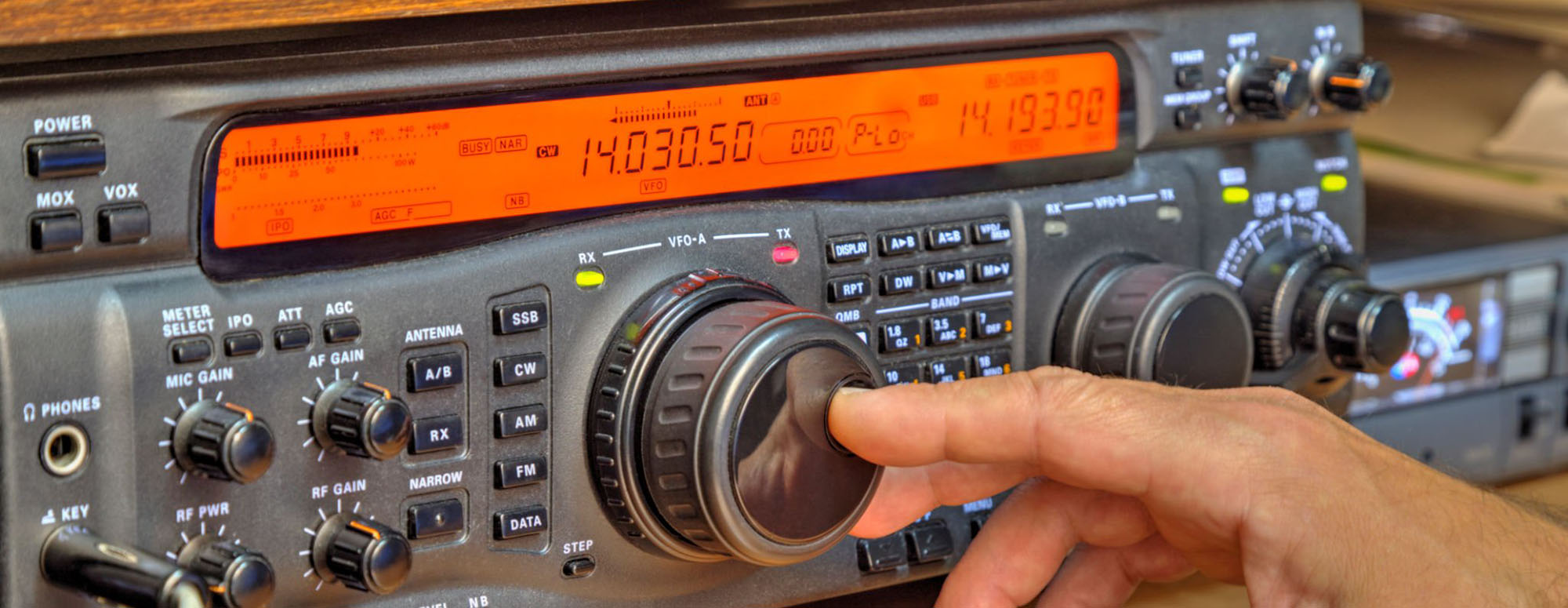WB2UEV: Building a Resilient 70-Centimeter Repeater for Northwest Georgia
By sharing, you're not just spreading words - you’re spreading understanding and connection to those who need it most. Plus, I like it when people read my stuff.
Deep Dive into the Hardware Design The hardware for the WB2UEV repeater system combines legacy radio technology with modern computational power, showcasing the best of both analog and digital worlds. Let’s dissect the heart of the system and explore each component's role in detail.
Motorola MCS-2000 Radios: The Backbone of RF Communication Why the MCS-2000? The Motorola MCS-2000 radios were chosen for their professional-grade durability, excellent audio clarity, and ability to operate continuously under load. These radios have a reputation for reliability in commercial and public safety environments, making them a natural fit for a high-duty cycle ham repeater.
Setting Up the RX and TX Radios Receiver (RX): Tuned to 448.7750 MHz, the RX radio’s configuration prioritized clear signal reception, with finely tuned squelch settings to avoid false triggering from noise. Transmitter (TX): Operating on 443.7750 MHz with a 5 MHz offset, the TX radio’s power output was carefully adjusted to balance coverage area and heat dissipation. Modification Process To adapt these radios for repeater operation:
Audio Path Tapping: I soldered directly onto the radio’s audio circuits, ensuring clean signal extraction for processing by the Raspberry Pi. PTT Control Integration: The TX radio’s PTT (Push-to-Talk) functionality was routed through the Raspberry Pi’s GPIO pins, enabling precise, software-driven control over transmission. Impedance Matching: Custom circuits were added to match the radio's impedance with the Raspberry Pi interface, ensuring audio clarity and preventing signal degradation. These modifications allowed the Motorola MCS-2000 radios to seamlessly interface with the Raspberry Pi, bridging the analog and digital components of the system.
The Raspberry Pi: The Brain of the Repeater The Raspberry Pi plays a pivotal role, managing the repeater’s operational logic, VOIP connectivity, and advanced features like sensor integration. Its versatility and efficiency made it the ideal choice for this project.
Allstar Customization Allstar is an open-source VOIP system widely used in ham radio. For this project, the software was extensively customized to enable:
Repeater Logic: Automated signal routing, squelch control, and time-out timers to prevent misuse. Node Management: Integration with Allstar Node 59061 and Echolink Node 134370, enabling operators worldwide to connect to the repeater. Sensor Data Broadcasting: Scripts were written to periodically poll connected sensors (e.g., DHT22 for temperature and humidity) and convert this data into spoken announcements using a text-to-speech engine. Why Raspberry Pi? Compact Form Factor: Easily integrates into the repeater’s enclosure. Low Power Consumption: Critical for extended operation during power outages. Flexibility: Capable of handling multiple tasks, from RF signal processing to internet-based VOIP services. The Pi acts as a bridge, merging the analog functionality of the Motorola radios with the digital versatility of modern computational systems.
Duplexer: Isolating Signals for Simultaneous Operation A repeater relies on the ability to transmit and receive simultaneously, which requires careful frequency isolation. The duplexer achieves this by separating the RX and TX signals, ensuring that the repeater can function without interference.
Tuning the Duplexer Tuning the duplexer was one of the most meticulous steps. Using a spectrum analyzer, I adjusted the resonant cavities to:
Reject TX Interference on RX: Minimize desense by filtering out signals on 443.7750 MHz from affecting the 448.7750 MHz receiver. Pass RX and TX Signals Efficiently: Reduce insertion loss to maintain strong signal strength. Proper tuning ensured the repeater could operate with minimal noise, delivering crystal-clear audio to all connected operators.
The Antenna System: Maximizing Coverage High-Gain Antenna Selection The antenna system is critical to achieving wide-area coverage. For this repeater, I selected a high-gain dual-band antenna with the following characteristics:
Frequency Range: Optimized for the 70-centimeter band. High Gain: Enhances signal strength, extending the coverage area. Durable Build: Weatherproof construction to withstand the elements. Antenna Placement The antenna was installed at an elevated location, carefully chosen to maximize line-of-sight propagation across Northwest Georgia. Its position ensures that signals can travel over hills and valleys, reaching even remote operators.
Coaxial Cable and Connectors Using low-loss coaxial cable was essential to minimize signal degradation between the radio and antenna. High-quality connectors were used to prevent impedance mismatches and ensure reliable performance over time.
Environmental Sensors: Expanding the Repeater’s Capabilities DHT22 Sensor The DHT22 is a high-precision sensor used to monitor:
Temperature: Broadcasted to operators during extreme heat or cold conditions. Humidity: Useful for weather tracking and environmental awareness. Air Quality Sensors To provide additional environmental data, I integrated air quality sensors capable of measuring:
Particulate Matter (PM2.5 and PM10): Important for monitoring air pollution and wildfire smoke. CO2 Levels: Useful for identifying potential health risks in enclosed spaces. Data Processing and Broadcasting Sensor data is processed by the Raspberry Pi and broadcasted over the repeater as voice announcements. Operators can trigger updates using DTMF commands or listen to automated periodic reports.
Power Systems: Ensuring Uninterrupted Operation Uninterruptible Power Supply (UPS) The UPS provides immediate backup power during outages, ensuring that the system remains online without interruption.
Solar Power Integration A solar array charges a battery bank, offering a sustainable power source for extended outages. This setup allows the repeater to operate independently of the grid during disasters.
Generator Backup For prolonged emergencies, a generator serves as the final layer of power redundancy, capable of sustaining the system indefinitely when refueled.
Internet Connectivity: Reliable VOIP Integration Primary Connection The repeater’s VOIP functions rely on Xfinity Cable Internet, providing high-speed connectivity for everyday operations.
Satellite Backup To ensure continuous operation, HughesNet Satellite Internet serves as a failover connection. This redundancy guarantees that the repeater’s Allstar and Echolink nodes remain accessible, even during terrestrial outages.
Real-World Applications Skywarn Integration The repeater plays a vital role in the Skywarn network, enabling local weather spotters to relay critical observations during severe storms. This integration enhances public safety by providing timely information to the National Weather Service.
Environmental Awareness Real-time broadcasts of temperature, humidity, and air quality data keep operators informed, particularly during events like heatwaves, wildfires, or pollution spikes.
Remote Device Control Operators can use DTMF commands to control devices connected to the repeater, such as:
Lights: Turned on or off for convenience or emergency signaling. Other Appliances: Future expansions could include gates, fans, or even security cameras. Deployment and Testing Deploying the WB2UEV repeater involved:
Signal Testing: Verifying coverage across the region with handheld and mobile radios. Sensor Calibration: Ensuring accurate environmental readings by comparing the sensors to reference instruments. VOIP Functionality: Stress-testing the Allstar and Echolink nodes to handle high traffic without latency. Community Impact Since its deployment, the repeater has become a cornerstone of the Northwest Georgia ham radio community. Its reliable performance and innovative features have been widely praised, providing value to both hobbyists and emergency responders.
Reflections and Future Plans Building this repeater has been a rewarding journey, blending technical challenges with the joy of serving the community. Looking ahead, I plan to:
Expand the environmental monitoring system with additional sensors, such as wind speed and rainfall gauges. Explore digital modes like DMR or Fusion to enhance compatibility. Automate more functions, such as alerting operators to critical weather events. The WB2UEV repeater stands as a testament to the creativity and resilience of amateur radio, bridging the gap between tradition and technology.




0 Comments